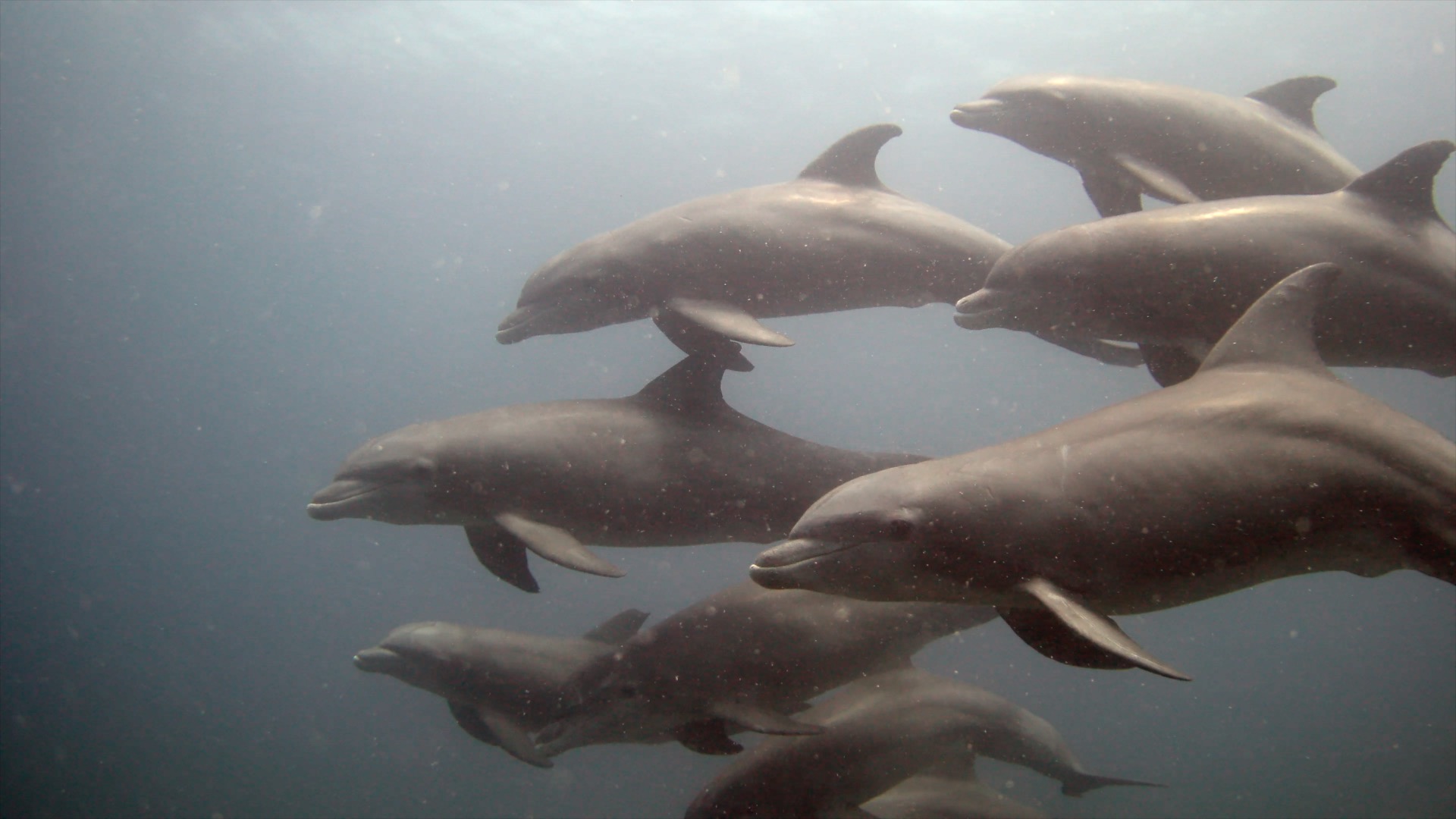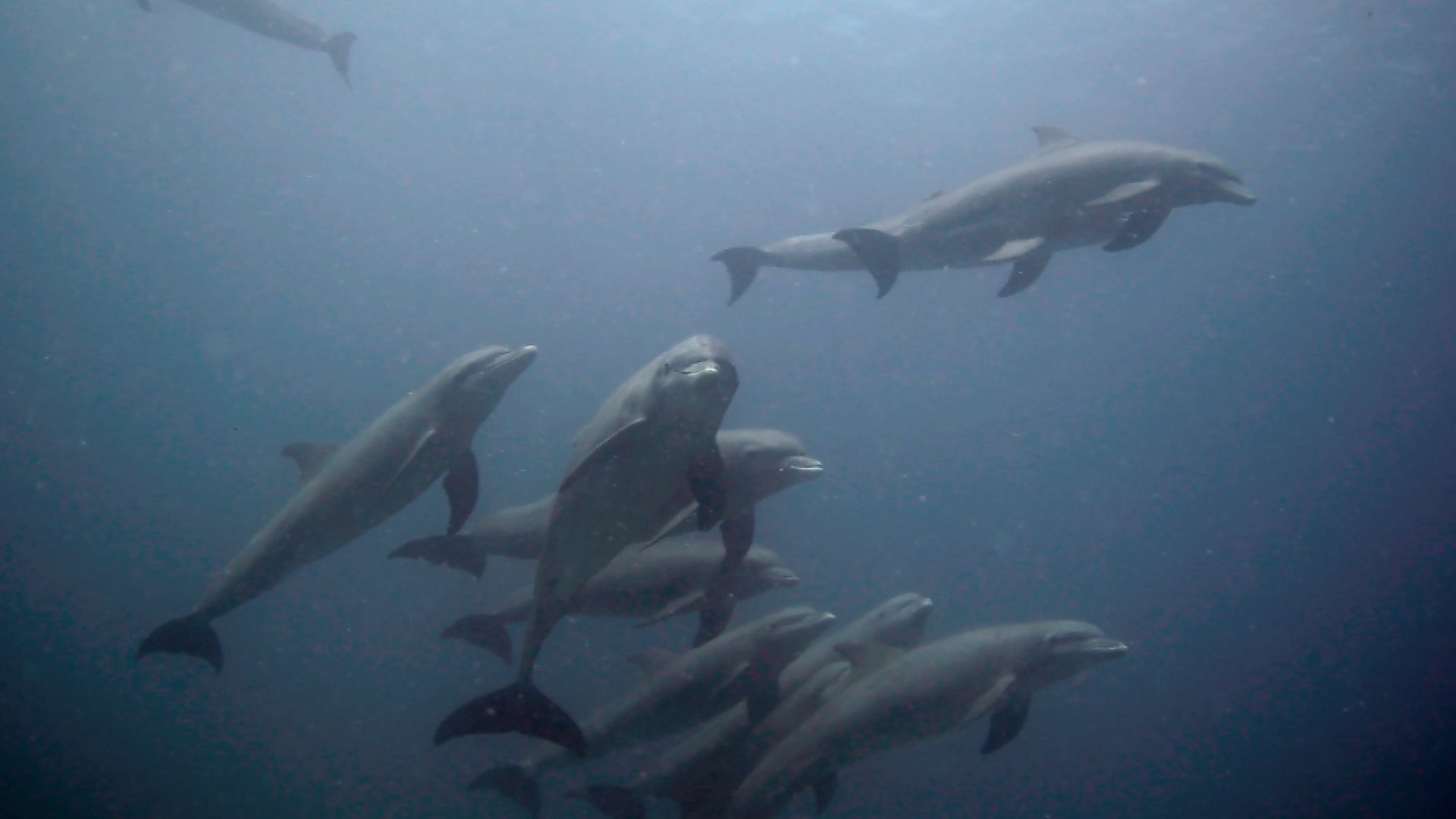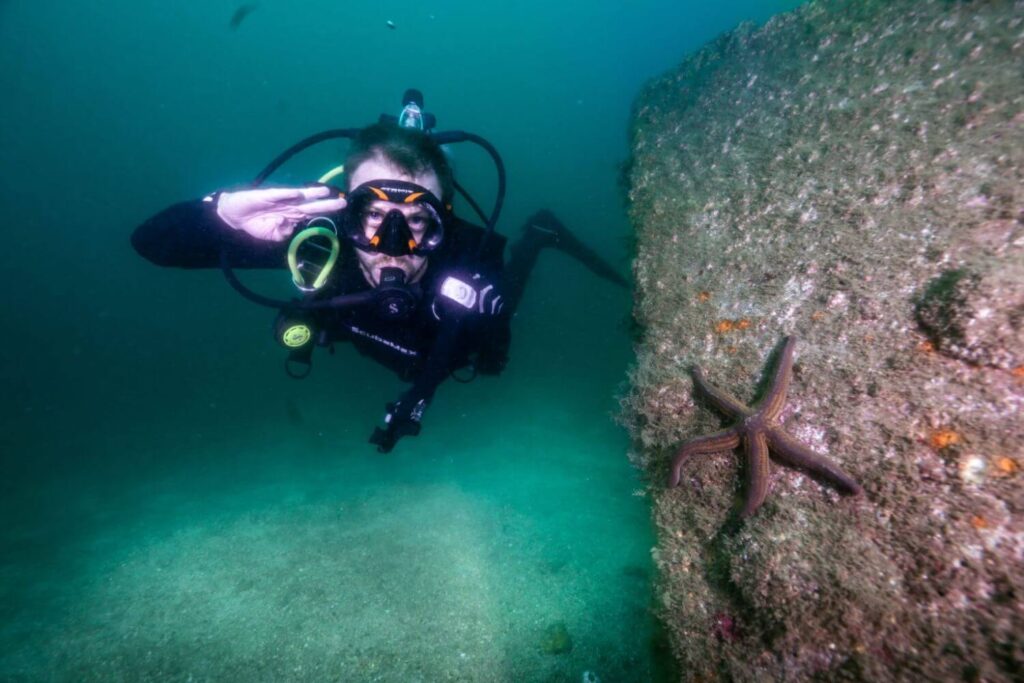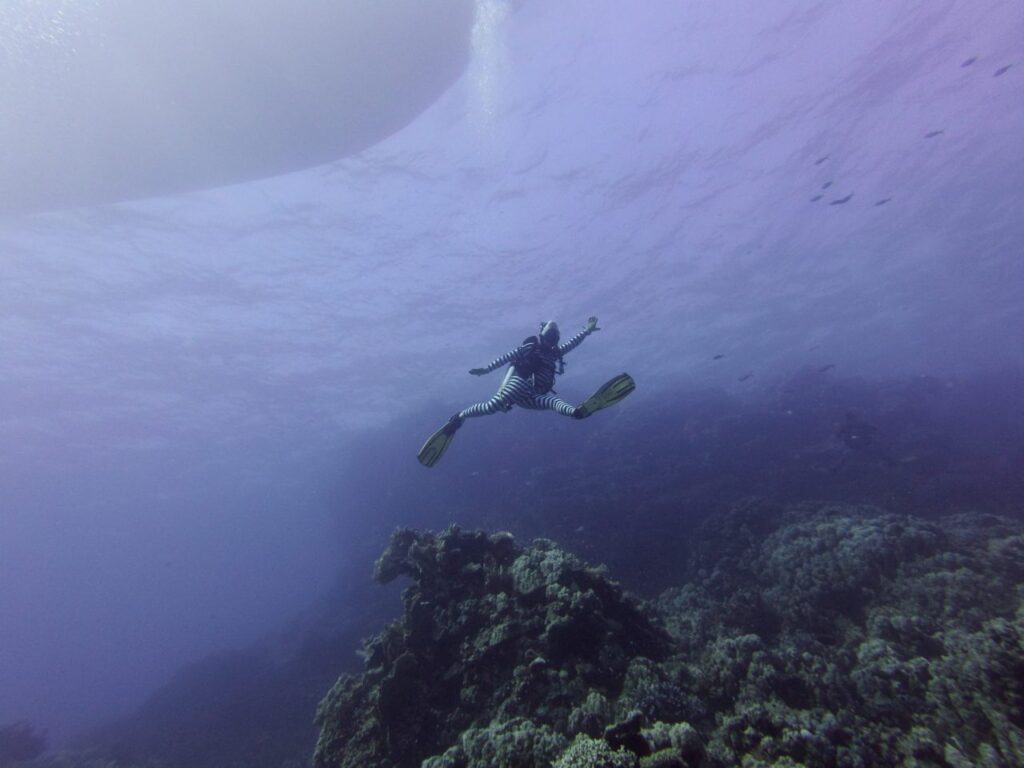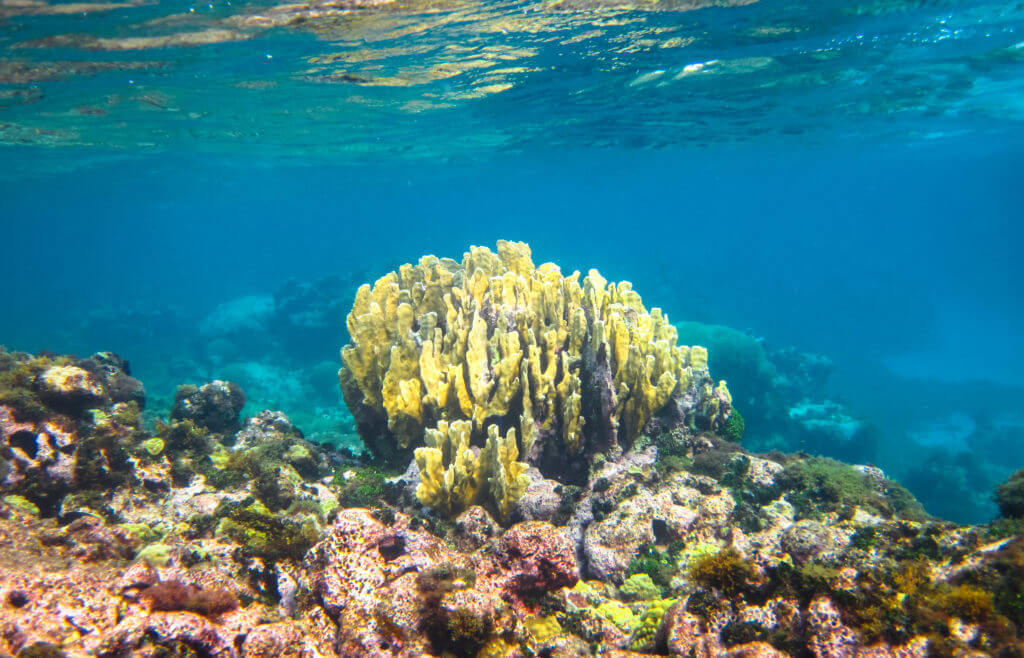
Some 70 kilometres east off the Caribbean coast of Nicaragua are the Corn Islands; comprising Big Corn with an area of 10 square kilometres and Little Corn (the best one!) at 3 square kilometres.
Once a British protectorate frequented by pirates, the region was annexed by the Nicaraguan government in 1894.
These two island’s remoteness and small size has allowed a healthy surrounding marine ecosystem to thrive around them.
Remote and tiny; the corn islands offer some of the best off the beaten track scuba diving in all of Central America with healthy coral reef, endemic nurse sharks, scores of fish, squid and other marine life.
In May 2022, I got to visit the Corn Islands as the final part of my year exploring lower Central America.
Without a doubt, they were the hardest to reach scuba diving destination I reached that year, but it was this remoteness that gave the Corn Islands their charm.
In this report, I’ll tell you all about my experience scuba diving the Corn Islands of Nicaragua whilst arming you with all the knowledge you need to go there yourself.
(Underwater footage captured with my Paralenz Vaquita)
I feel the above video does a great job of capturing the kind of experience you can have at the Corn Islands! Admittedly, the dolphins (spotted at the dive site Casa Blanca) were a lucky encounter but they do get sighted there enough for the dive centre I went with to be called Dolphin Divers!
Additionally you are practically guaranteed to see nurse sharks when diving sites like white hole, you have an excellent chance of spotting squid and you will definitely see plenty of healthy coral, tons of reef fish and spiny lobsters plus eagle rays, southern stingrays and turtles are also a very common sight.
Extremely lucky divers do also have the chance to see hammerhead sharks and even bull sharks; however this doesn’t happen often and I didn’t see any!
In the next sections, I’ll walk you through all of the logistics you need to know for diving the Corn Islands – picking a dive centre, how to go and diving season. After that, you can read my personal log of what happened to me when I drove from Costa Rica to Nicaragua to dive the Corn Islands.
CONTENT:
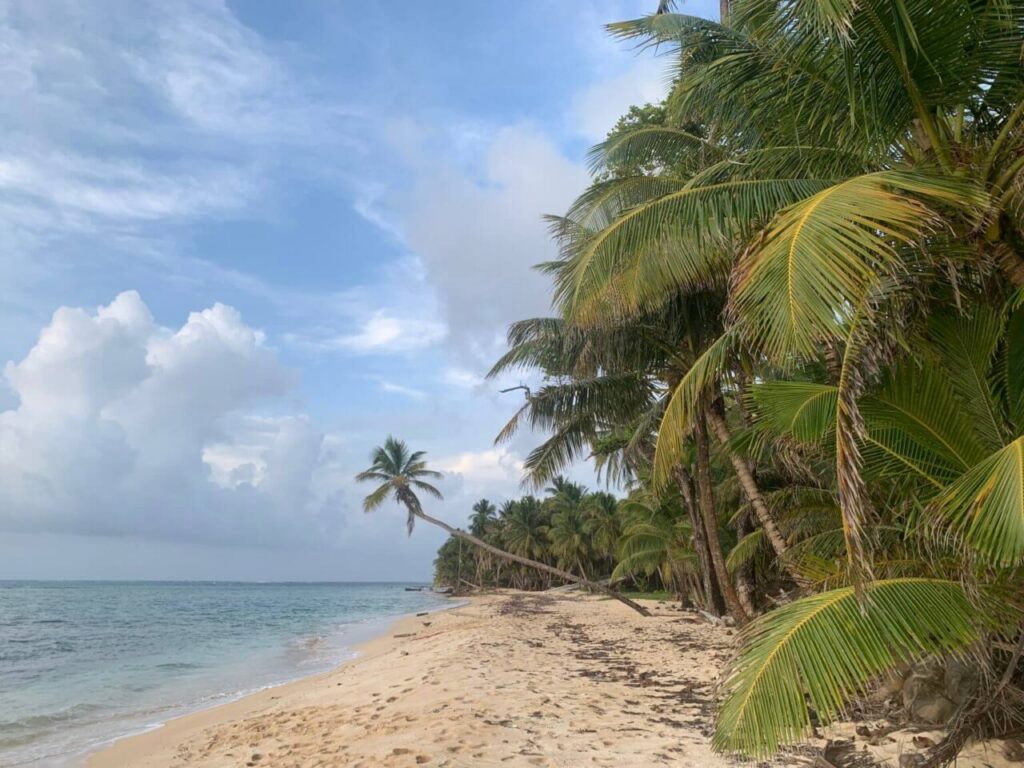
Dive Centres of Corn Islands, Nicaragua
You can opt for a dive centre on little corn or big corn islands. The vast majority of scuba divers prefer to head to little corn because it’s much more laid back and this is also where you’ll meet more divers. Plus virtually all of the best dive sites are around little corn. I strongly recommend doing the majority, if not all of your diving on little corn!
The only real reason to dive from big corn is because it’s easier to access one very good dive site from there: blowing rock. However, you need a group of at least three to persuade a dive centre to take you there and at certain times of the year, the weather won’t permit. More info on that soon… for now let’s talk about:
Dive Centres on Little Corn:
- Dolphin Divers: my dive centre of choice, these are the guys I went with! Everything was very professionally run, they offered a combo deal if you book multiple dives and to stay at their adjacent accommodation los delfins hotel and the equipment they rent out is all of very high quality. Plus, it was with dolphin divers that I saw…dolphins – it’s a sign!
- Las Palmeras: also close to the jetty, main restaurants and bars. They also have some accommodation and unlike Dolphin Divers it’s actually overlooking the sea.
- Dereks Place / Little Dive Shack by the Sea: Situated at the north east tip of little corn, it’s a little isolated from the main strip, which might be exactly what you’re looking for.
Now, as for diving Big Corn, I really can’t stress enough that I only recommend doing this for one or two nights max IF you can secure a dive at Blowing Rock – which you will definitely need to book ahead as they require at least three divers and only go at certain times of years. With that out of the way, the dive centres on Big Corn are as follows:
Dive Centres on Big Corn:
Finally, all of the dive centres offer budget to mid-priced accommodation at a discount price for divers and this is what I recommend doing. However; there’s also plenty of hostels and beach style cabin hotels; for the absolute cheapest deal, these will be your best option.
Diving Season
You can dive the Corn Islands of Nicaragua year round! As with much of the Caribbean, the Corn Islands generally experience calm seas, good visibility and light currents. That said, weather conditions can still be choppy; it’s just that such rough weather; whilst not very common, can technically occur throughout the entire year.
When you do get days of rough weather, there’s still plenty of of dive sites that you can explore; but a few: namely Blowing Rock and also to a lesser extent White Hole, probably can’t be visited when the sea is very choppy.
Ok, so I was told that the absolute calmest months are between March and July; that said I went in May specifically to have the best chance of visiting Blowing Rock and this still turned out to be unfeasible due to it being far enough from the mainlands to be more exposed to bad weather and also not being able to find enough other divers who wanted to go.
So honestly, your best bet of diving the Corn Islands is to go at the time that suits you the most and not get bogged down in trying to coordinate a specific time for the absolute best months. Chances are high that you’ll experience decent weather and be able to explore most dive sites but with regards to Blowing Rock it appears to be a roll of the dice at pretty much any time of the year. I asked all the diver centres about going there and every last one of them were reluctant.
As for water temperature; during winter months they can be in the low to mid 80s (Fahrenheit!) and in the winter it’s in the high 70s. So I recommend a shorty wetsuit which is what myself and literally every other diver I saw used.
Getting to the Corn Islands
Oh boy. Little Corn was one of the most challenging to reach scuba diving destinations I’ve ever visited. If only I’d had a step by step guide like the one I’m about to give to you:
- You need to get to Nicaragua’s capital city; Managua. What people don’t realise is that flights into and out of Managua are incredibly expensive. If you’ll be in a neighbouring country like Costa Rica or Honduras you could get a bus (your best bet here will be Ticabus) for way less. Or you could buy a cheap car and drive into Nicaragua like I did. Or fly international, but it just ain’t cheap! The choice be yours.
- Managua is closer to the Pacific side of Nicaragua but you need to get to the Caribbean side. Again a bus will be your cheapest option; it’s a 6 – 8 hour journey. Another choice is to get a 50 minute flight with LaCostena airlines (a domestic airline located at Managua international airport) for around $82 as a return flight. The planes are small with limited space so you’ll want to book your ticket in advance.
- If you took a bus from Managua to Bluefields you need to get a 40 minute ferry to Big Corn Islands; if you flew with La Costena, you’ll land on Big Corn. Little Corn is so, so much better in terms of dive sites, traveller facilities and overall vibe so don’t stick around on Big Corn (trust me!). A taxi from big corn airport to the docks costs 20 Cordobas and takes 5 minutes.
- Now, sometimes the panga ferry (which costs 180 cordobas) leaves from Big Corn to Little Corn at 10am…however other times it doesn’t go until 4:30pm. I had to wait until the afternoon…what a drag!
- And there you have it! That’s how you get to Little Corn. When it comes to leaving, getting to big corn and catching the flight to Managua airport is totally feasible within the same morning. You will have time! But watch out for a scam they tried on me: I found myself waiting at the dock with four backpackers and about twenty locals. The ticket girl (let’s call her “scammy-mc-scam-face”) insisted that the panga could not possibly leave unless me and the other gringos paid for the four spare seats on it that nobody had bought. My younger, more naive compadres were considering paying but in disgust I turned my back on scammy-mc-scam-face; ignoring her loud declarations of “well I guess the ferry not gonna leave then – yep – yah that right – we can’t go now, everyone go home”… until low and behold five minutes later the ferry DID leave, without us having to pay for the extra seats. Don’t fall for scams. They’re everywhere.
MY EXPERIENCE:
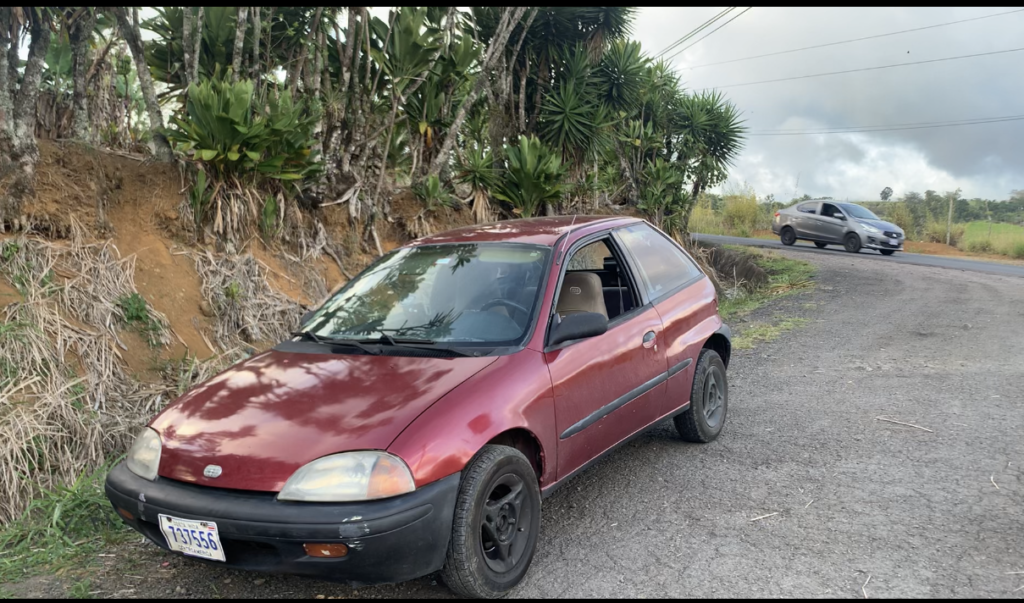
Half way through May 2022, I drove my much loved car – a Geo Metro 1996 (aka Senor Carro), that I’d bought the previous December and had been repairing ever since, from Jaco in Costa Rica to Managua in Nicaragua.
It was a scenically pleasant journey and despite one of my passengers literally screaming: “OH GOD ALEX! I DON’T WANNA DIE”!! I had a wonderful drive.
We raced over pothole riddled roads alongside the beach, hammered down the motorway, overtaking everything in sight and in the distance spied jungled steeped volcanos blotting out the horizon.
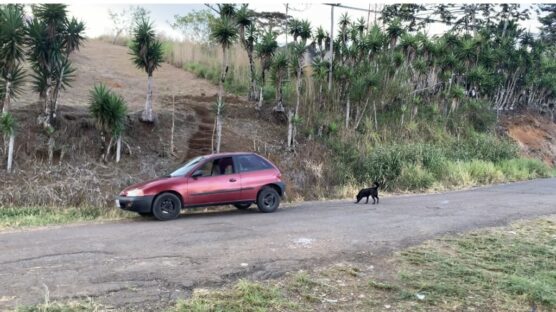
For much of the journey, a torrential downpour of rain hammered against Senor Carro’s windshield, sneaking through a loose gap to patter down onto the girl in the front passenger seat before fogging up the windows. It was the start of rainy season.
We dealt with this using the window-de-fogging-device (my t-shirt) and I later sealed up the loose crack in the windshield with a healthy dollop of glue.
After a couple of days driving and dropping off my two passengers at their respective locations (Liberia in Guanacaste, Costa Rica and then Granada in Nicaragua); I found myself alone and arriving in Managua, the capital of Nicaragua.

The reason I’d chosen to drive was that flying in or out of Managua is exceedingly expensive; think at least three times the price you would normally expect to pay for anywhere else, wherever you are coming from.
So, the first step in reaching the elusive Corn Islands is to get to Managua and it’s much, much cheaper to do so via a public bus…or a car if you have one.
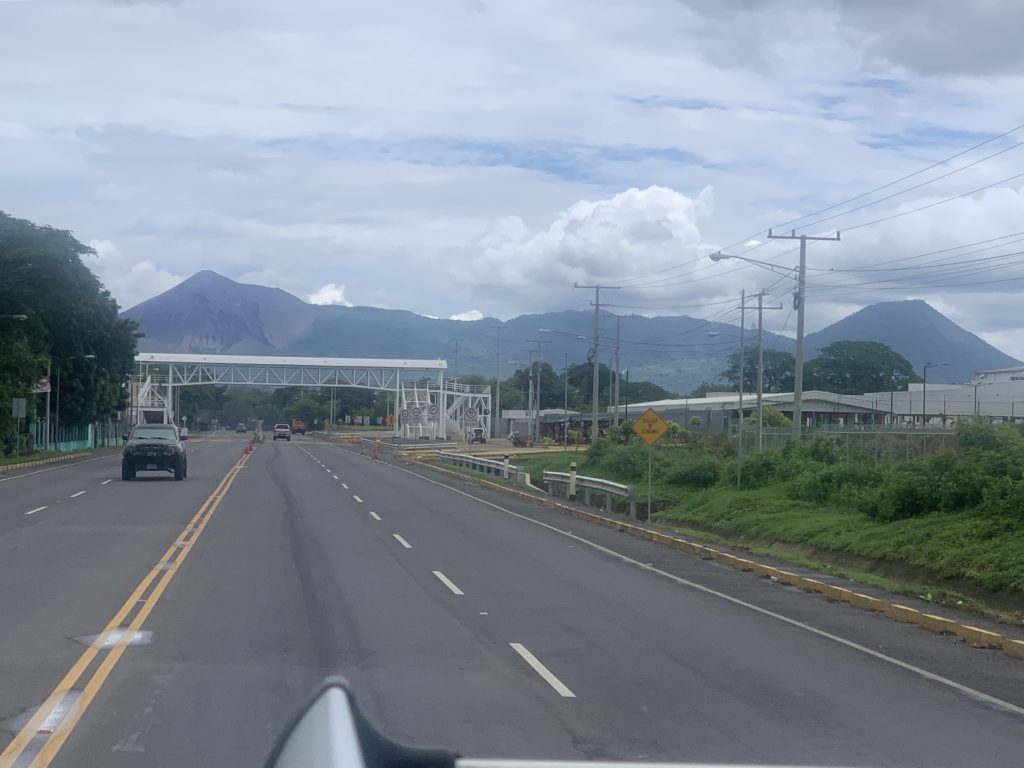
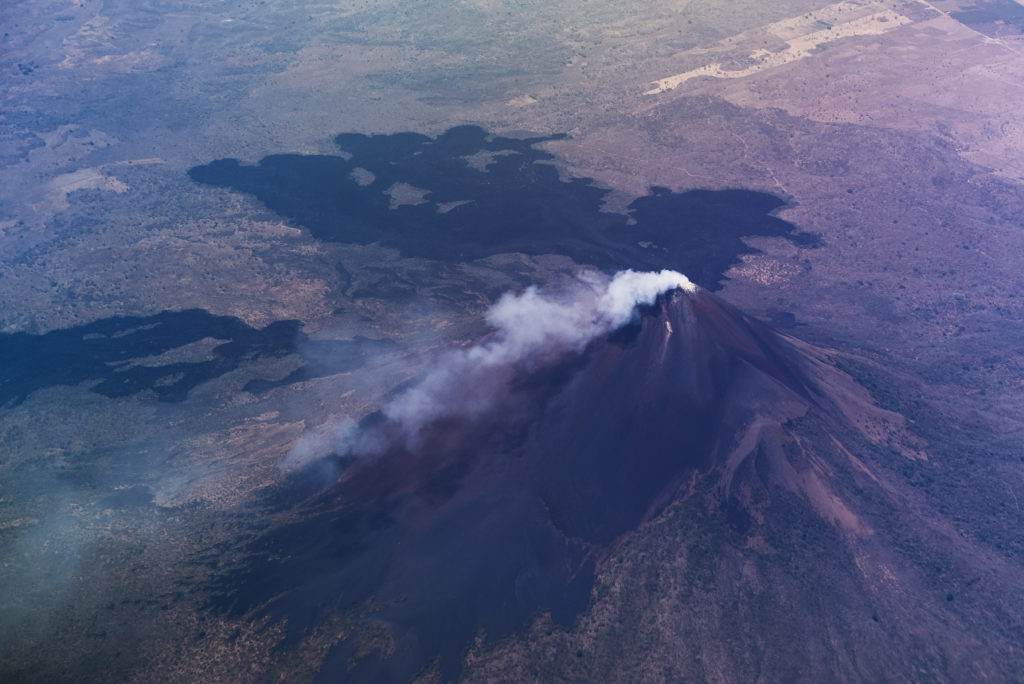
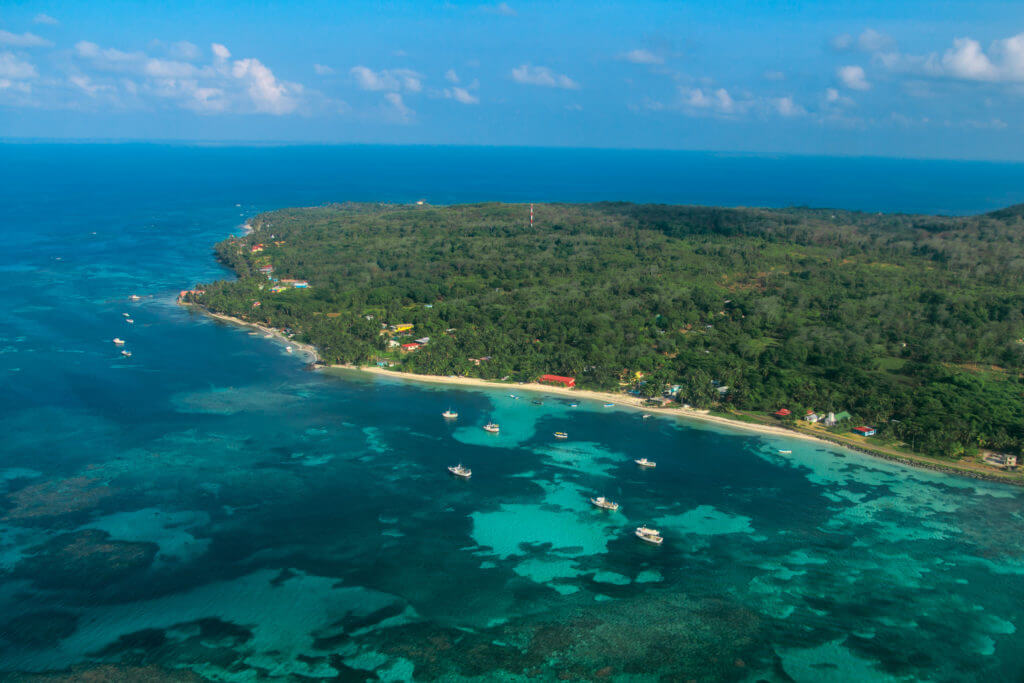
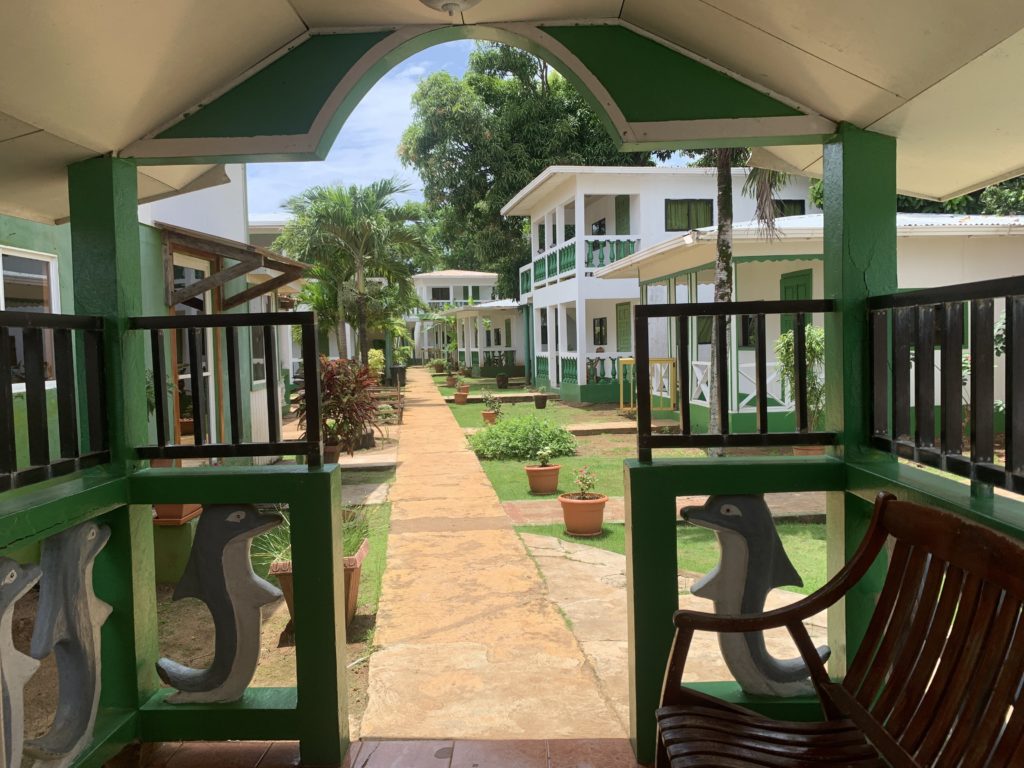
Although I’d originally planned to drive from Managua to Bluefields on the countries Caribbean side, I learned that to do so would involve putting my car on a boat.
This sounded like a huge amount of hassle considering my Spanish hadn’t evolved much further than phrases like dame todos los frijoles (give me all the beans) and that I still made mistakes like confusing the words cuchara (spoon) and culo (ass)…
…(I would later attempt to sell my car at a lawyers office speaking only in Spanish but that’s another story)…
So; I left the car in Managua; guarded by a friend and her two ferocious minature poodle like dogs and caught a tiny plane with La Costena airlines.
It was less than an hour of rickety plane flight over the many rolling bean fields of Nicaragua, spliced up by twisting rivers that snaked through the land, before we landed on Big Corn Island.
Although Big Corn has a decent dollop of dive sites and a couple of dive centres on it; I planned to make a beeline for the much quieter, smaller Little Corn Island.
The morning ferry was cancelled and so what should have been a ten minute wait for a twenty minute boat journey turned into an all-day wait in the sun with only a small handful of beans to keep me going.
Several other would-be passengers for the boat appeared to attempt to befriend me but I wasn’t in the mood so instead I skulked off to look for some weed.
After a hot eight hour wait and some truly terrible weed, I finally found myself stepping off of the ferry onto the jetty of Little Corn Island bay.
Little Corn island; with it’s near empty white beaches, meek spattering of low-key restaurants and colourful houses of the locals a little further back into the island interior, struck me as a place that seemed shut off from the rest of the world and indeed it turned out to be.
It only took me several minutes to walk from the jetty to Hotel los Delfins which was where I was staying.
The reason I’d chosen to stay there was because Hotel los Delfins was part of a co-establishment with Dolphin Dive Centre which it was directly next to and with which I’d signed up to dive.
I figured that by residing directly next to my chosen dive centre I could stay in bed for just a few minutes before the morning’s dive briefing…
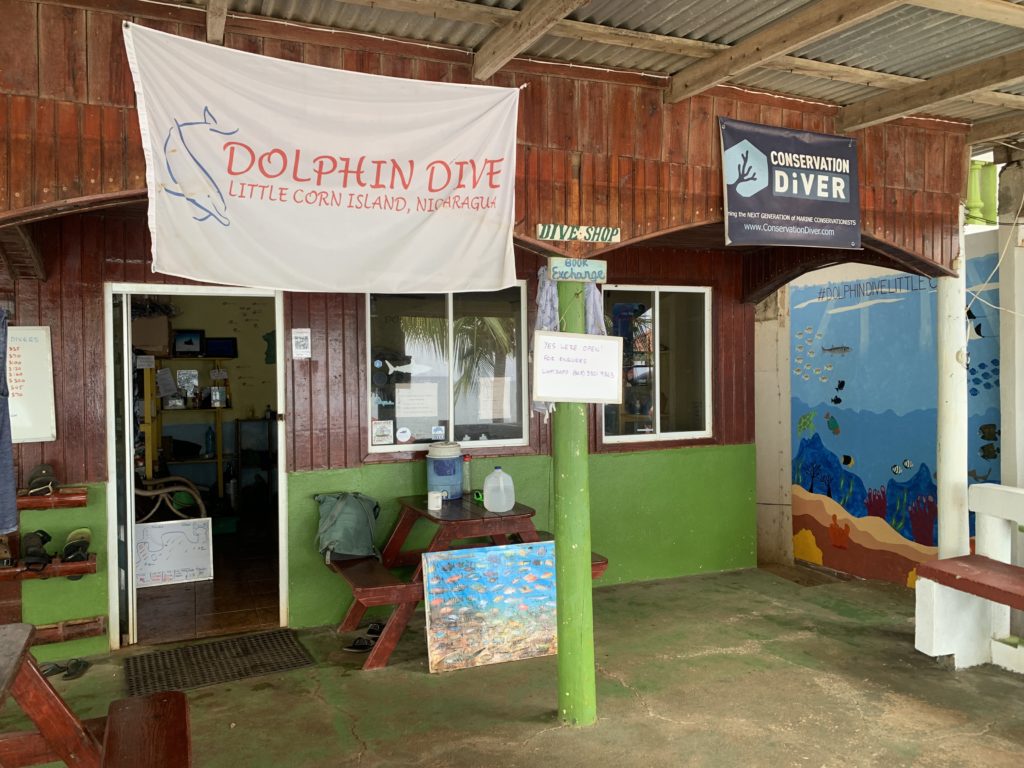
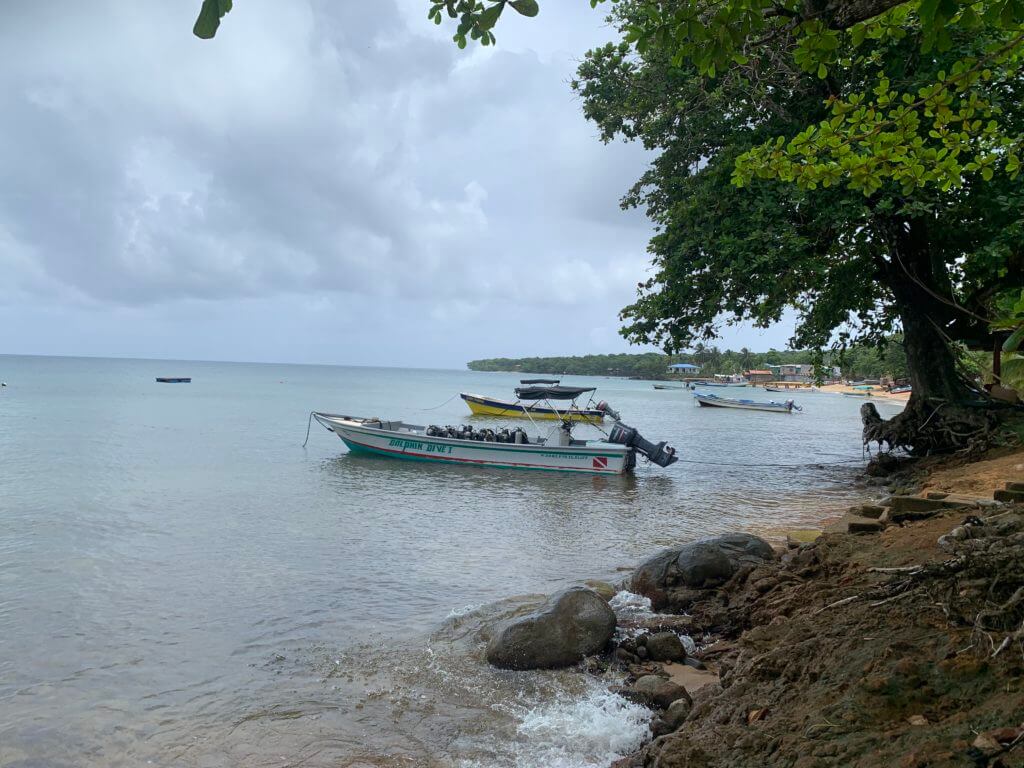
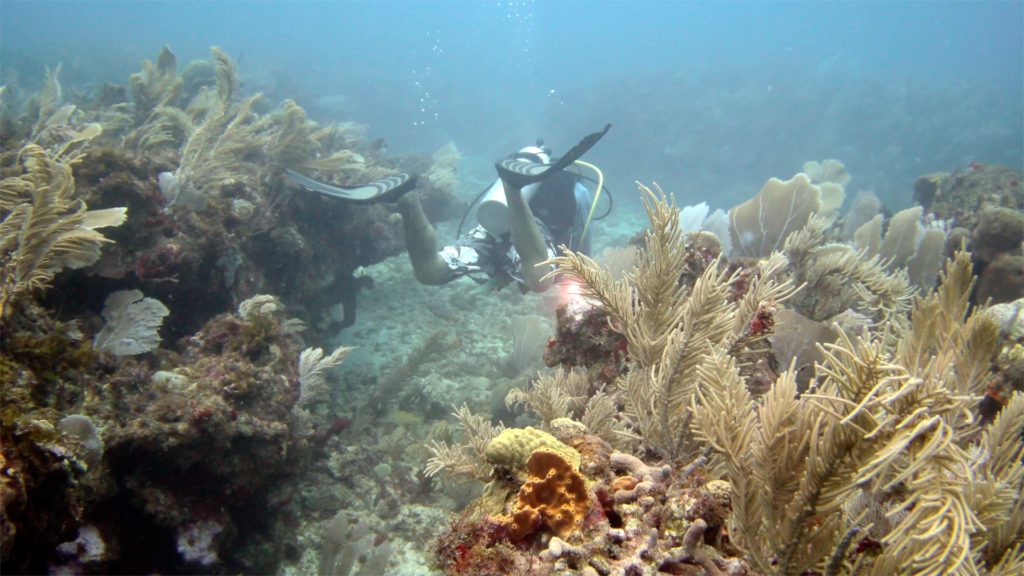
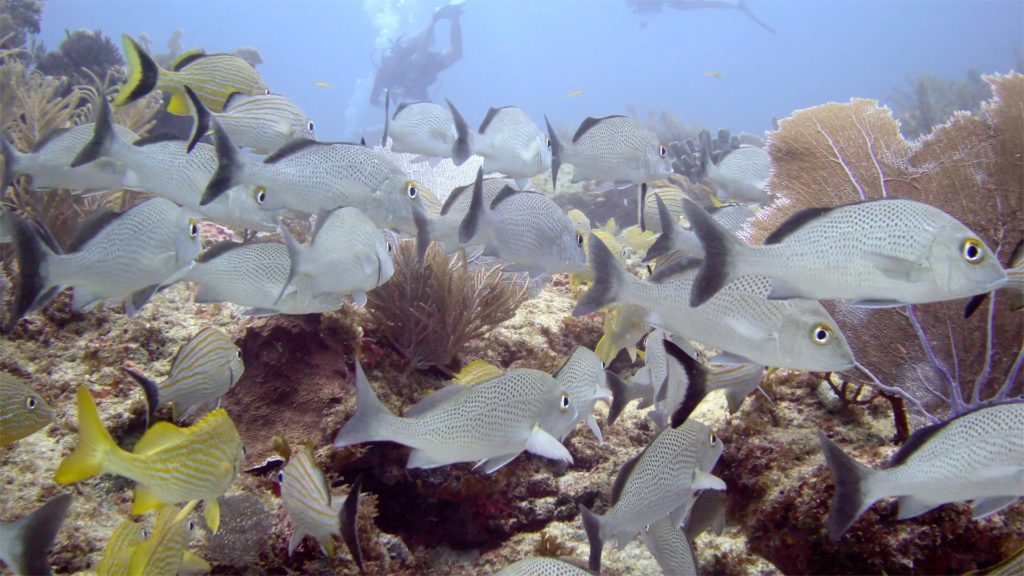
Things panned out pretty much exactly like that as the next morning, I woke up; groggy eyed and hungover, to grab a nutritional breakfast of RedBull and stumble into Dolphin Dive Centre half way through the dive briefing.
Barely paying any attention to the remaining half of the dive briefing (for a great diver had once told me that he didn’t believe in dive briefings as they spoil the sense of discovery), I wandered around Dolphin Dive looking at it’s various maps, fish id boards and white board listing cool sightings from the previous week.
Dive centres are a little like pubs or music venues in that no two are the same and all have their own unique charm and Dolphin Dive was no different; a sense of adventure and intrepidation hung in the air.
It was also a pleasure to meet the staff and fellow guest divers; I say this every time but scuba divers are some of the coolest, quirkiest and most awesomely weird people you can meet and I always feel honoured to meet every diver that I do. Just days later, we’d all be drunkenly belting out terrible karaoke in the local pub together…
We spent our first day diving around the northern side of little corn at the dive sites “jarhead” and “long rock”; both of which blew me away for how beautiful and abundant the reef there was.
Seemingly for as far as the eye could see there stretched a living carpet of varied coral with dense clusters of yellow seafans and orange sea whips that rose and fell in the current like colourful lungs inhaling and exhaling.
In places, the reef rose momentarily and then fell away to form small ridges and shallow canyons that we could swim through, encased on either side by the abundant reef.
Countless colourful fish darted this way and that, sheltering among the reef from the giant barracuda prowling through the open waters overhead.
Spiny lobsters and barracuda poked out of holes and crevices only to shrink back when we drew close.
It was an incredible first day of diving, but the best was still to come.
The next day I embarked on a very special dive indeed – probably one of the coolest I’d ever made up to that point.
We went to the dive site known as casa blanca. Things were off to a good start when I saw my first every squid – or more specifically my first every twenty squid; all of them swimming in a perfectly straight line, seemingly maintaining the exact same distance between one another; like a murmuration of birds.
They were almost entirely transparent making them hard to see from a distance – but as we drew closer several individuals began to change colour, pulses of blue and yellow rippling along their jelly like bodies as they regarded us with huge beady eyes.
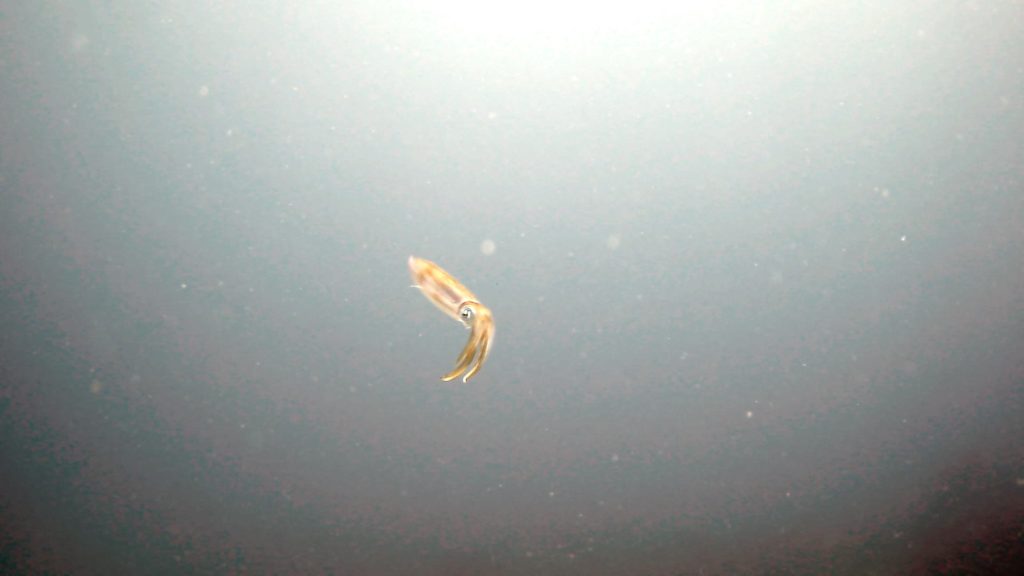
I didn’t think things could get any better after that but then right at the end of the dive, a pod of eleven bottlenose dolphins appeared out of nowhere and swam directly in front of my camera before proceeding to make several curious loops around me and the other divers – check out the full video here!
It was perhaps the most memorable scuba diving experience I’ve ever had and it left me blown away to my core and full of awe and admiration for those incredibly intelligent, powerful and yet gentle animals.
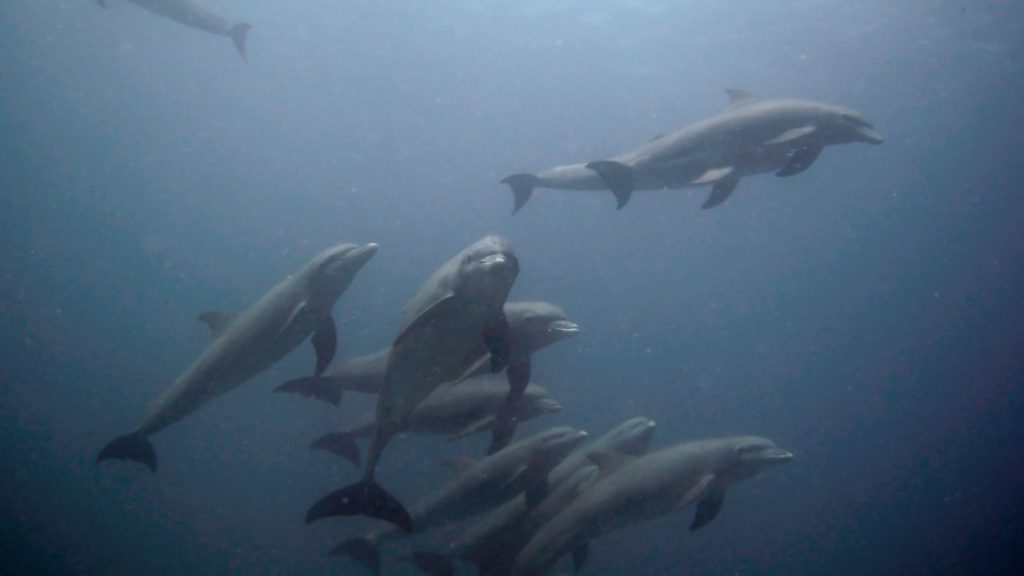
It occurred to me how despite being so curious about our presence; enough to come as close as they did, those dolphins whom could have so easily inflicted damage upon us, maintained a respectful distance and never actually touched any of us.
I wandered if humans would be so respectful if they found an alien in their home and decided that probably no, someone would have to touch it. Well, thanks for not touching, biting or attempting to have sex with us dolphins.
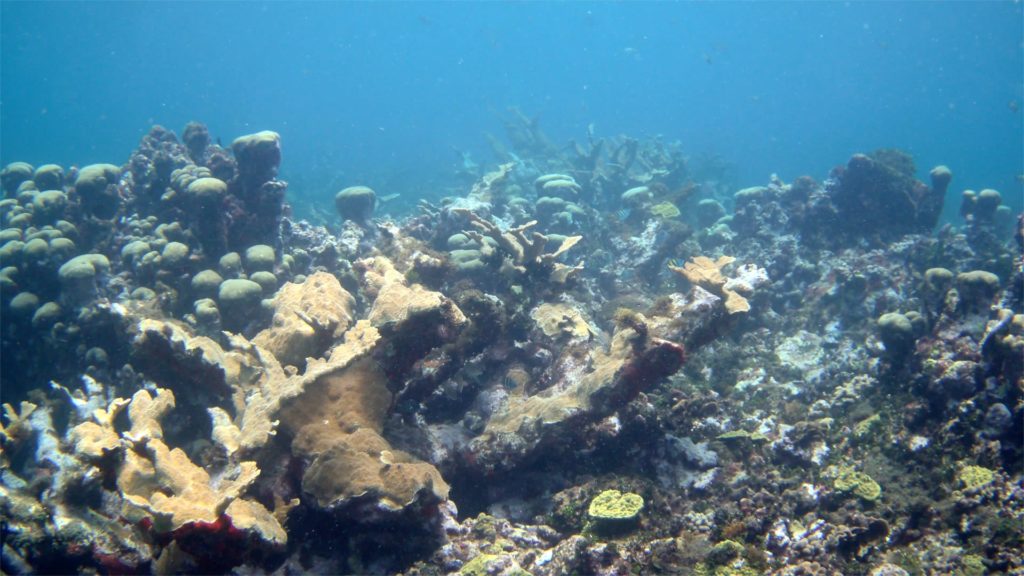
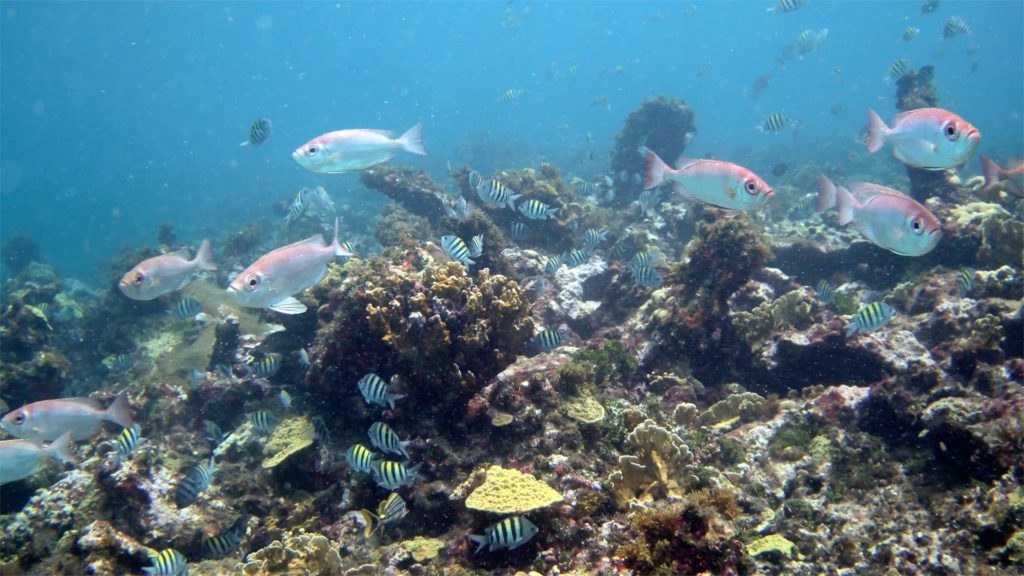
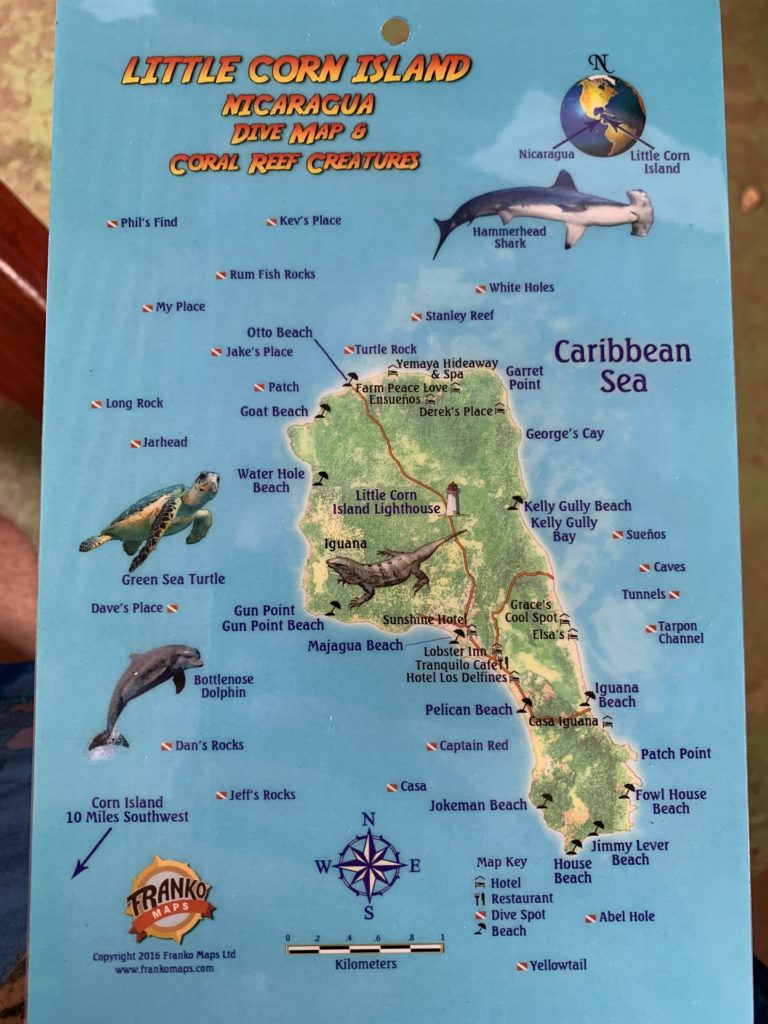
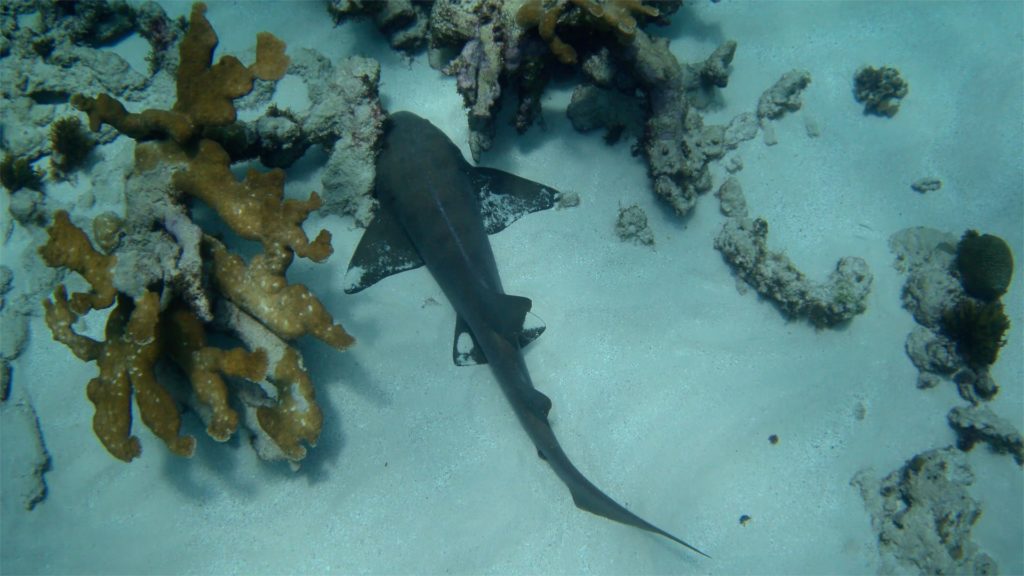
The next day we went to a dive site called white hole and it was here that the reef was it’s most spectacular.
There were some truly massive patches of elkhorn coral, an endangered species that I’d never seen before and which grows in the shape of an elks horns (who’d have thought!), bigger than a man and in a stunning fiery orange colour.
Amidst it, there were all manner of other kinds of coral including dense carpets of red staghorn coral dotted by green lettuce and purple lobe corals; with blue vase and pink great star corals rising up amongst them between bright orange sponges, and more seafans and sea whips waving in to and fro.
Angelfish, porkfish, clownfish, sergeantfish, butterflyfish, soldierfish, squirrelfish, damselfish, cardinalfish, parrotfish, doctorfish, goatfish, pufferfish, jawfish, gobies, wrasse and barracuda…to name a few of the endless species of fish all around us, darted, weaved, floated, hovered and swum amongst the intricate and colourful coral reef like tiny pieces of colourful confetti swirling around a giant spiky, curvy, wavy, living pinata.
At one point an eagle ray circled all the way around us before darting off and another time we spotted a huge turtle cruising through the waters in the distance.
In total I saw four nurse sharks. Most were around five to six feet in length; with their dark grey skin and pointed fins, they looked distinctly sharky; although these slow-moving bottom dwellers have also been dubbed the “laziest sharks in the world” and indeed most were simply lying on the sand, waiting for nightfall when they would become slightly more active to cruise along the sea-bottom hunting for crustaceans, bony fish and small rays.
These laid back sharks are endemic to the corn islands; indeed around white hole you are almost guaranteed to see them and this was one of the initial reasons I had travelled all the way to Nicaragua to dive.
Guttingly, my beloved Paralenz Vaquita, with which I had resolved to capture all of my underwater footage at the Corn Islands with, hadn’t charged overnight due to a power cut and it ran out of battery about ten minutes into the dive.
Fortunately being underwater noone could hear me shouting “ah god-fuckin’ damnit”! which I did for about a minute, whilst several nurse sharks that I couldn’t film swam past, before I settled down.
Perhaps it was a sign form the sea gods to make sure I didn’t only ever view their mighty domain through the lens of a camera
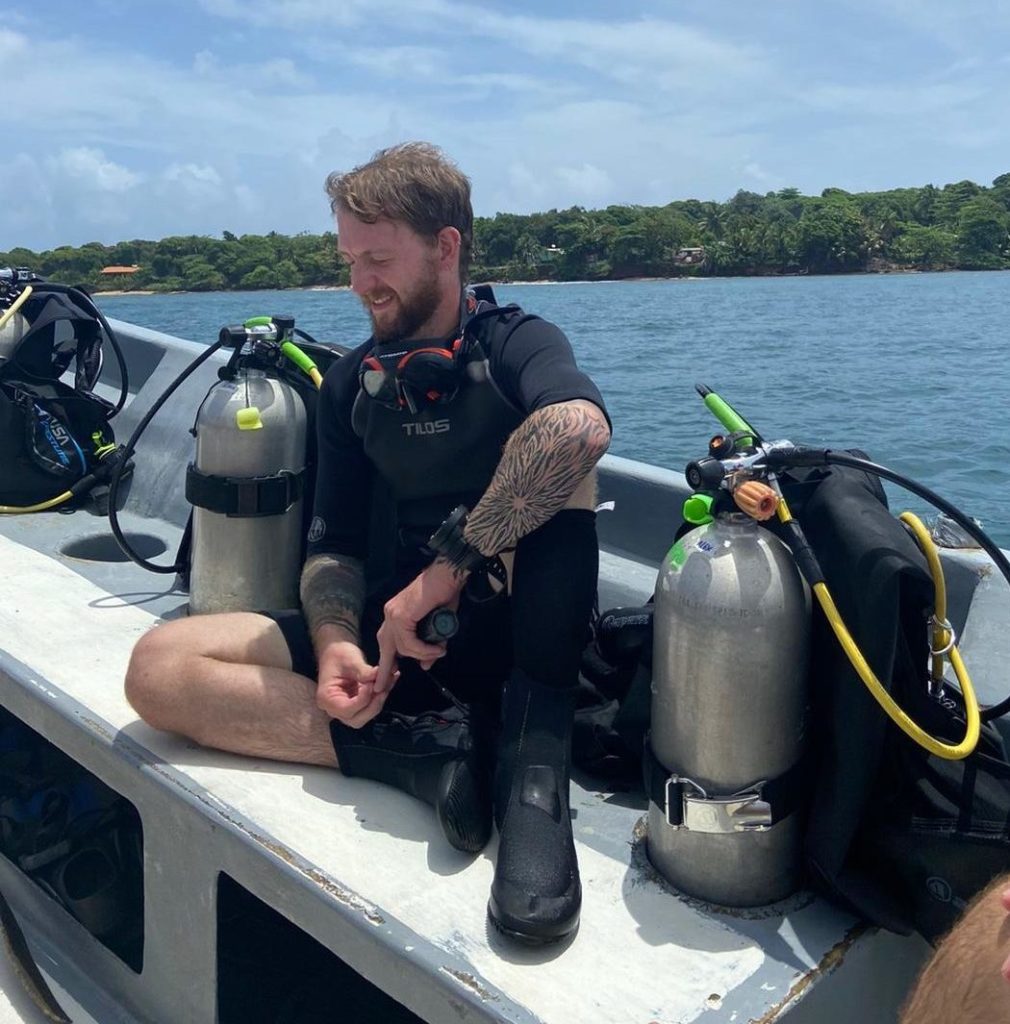
Over the next few days, I made several more dives. One evening, we went on a night dive and drifted through the pitch black water; torches in hand to see rays hunting octopuses, dart crabs mating and a thousand pink eyes of shrimps staring out at us between the cracks and crevices of the coral.
The water was alive with plankton; tiny shrimp and worm like creatures that became attracted to the lights of our torches and then, small schools of fish that hunted them so close to me I could feel their scales occasionally brushing past my skin.
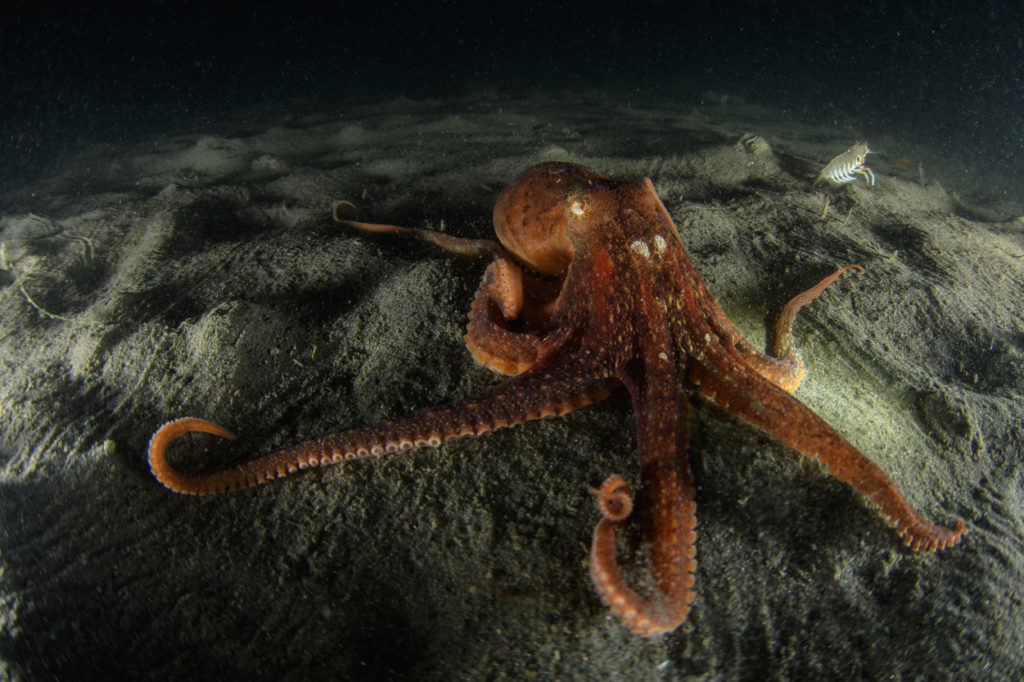
At one point, we all stopped and kneeled on the sand before turning off our torches. The water became alive with tiny, speck sized florescent plankton that lit up around us, glistening like stars and reminding me of a swarm of fireflies.
After a week, it was time for me to leave the corn islands; you can read about what I did next in my main journal entry on my year in Central America here.
All in all, the Corn Islands of Nicaragua was a very special place to dive. I consider myself extremely lucky to have seen all the things that I did – the dolphins and nurse sharks, the squid and coral reef, the fish and rays and finally the florescent plankton at night.
For me, the Corn Islands was the most “out there” dive destination that I visited during my year in lower central America – it was certainly the hardest to get to! Someday, I hope I’ll be able to go back there and check in with those dolphins.
Corn Islands Diving Squad DEBRIEFING:
And there you have it! Dolphins, squid, bioluminescence, nurse sharks, reefs, fish, rays, scams and road mayhem. This was the final big mission of my year long odyssey diving and driving around lower Central America, during which time I also dived a sizeable amount of Costa Rica and Panama.
In terms of visibility and marine biodiversity the Corn Islands were the best part of that entire year – I hope I can go back there someday and that the amazing marine ecosystem will still be doing as good as it was before.
